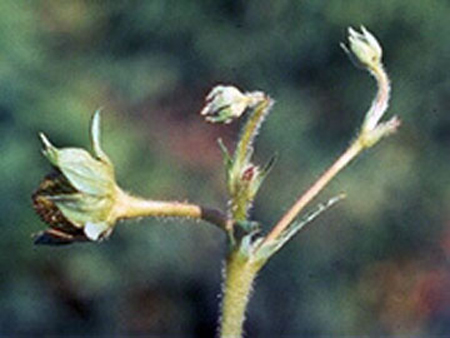Strawberry bud weevil
Strawberry bud weevil or Clipper (Anthonomus signatus) females lay an egg in individual buds, then clip the bud on the pedicel. Many strawberry varieties can compensate for this injury if it occurs early and if only secondary or tertiary flower buds are affected.
A severely damaged flower truss has the primary bud removed or two secondary buds removed.
For most strawberry varieties, the threshold for treatment is more than two severely damaged flower trusses per meter of row.
‘Jewel’, ‘Kent’, ‘Mira’ and ‘Seneca’ are considered compensatory varieties: they can recover from clipper damage relatively well. The threshold for treatment for compensatory varieties can be raised higher. The University of Manitoba suggests a threshold as high as 20 clipped buds per meter of row.

Adult bud weevils are quite small and difficult to see. They are most active at night. Therefore, look for clipped buds rather than adults.
More strawberry bud weevil information:
- Strawberry Bud Weevil (Clipper) – Cornell IPM Guides
- Notes on Strawberry Insects- Strawberry Clipper Weevil – (OMFRA)
- Strawberry Clipper Weevils – (University of Manitoba)
Use these resources if you need additional help with diagnosis and to find solutions to your problem.


